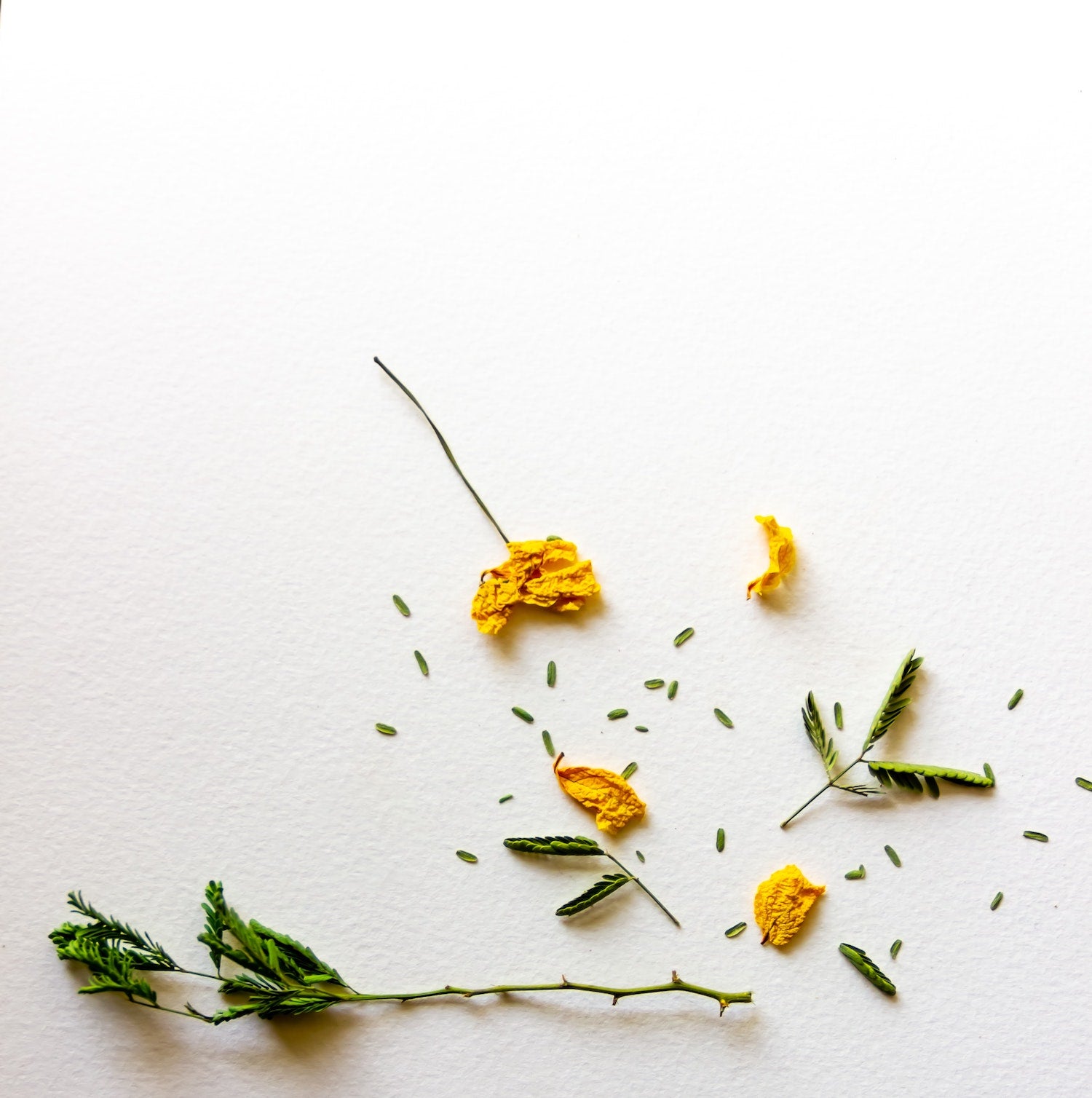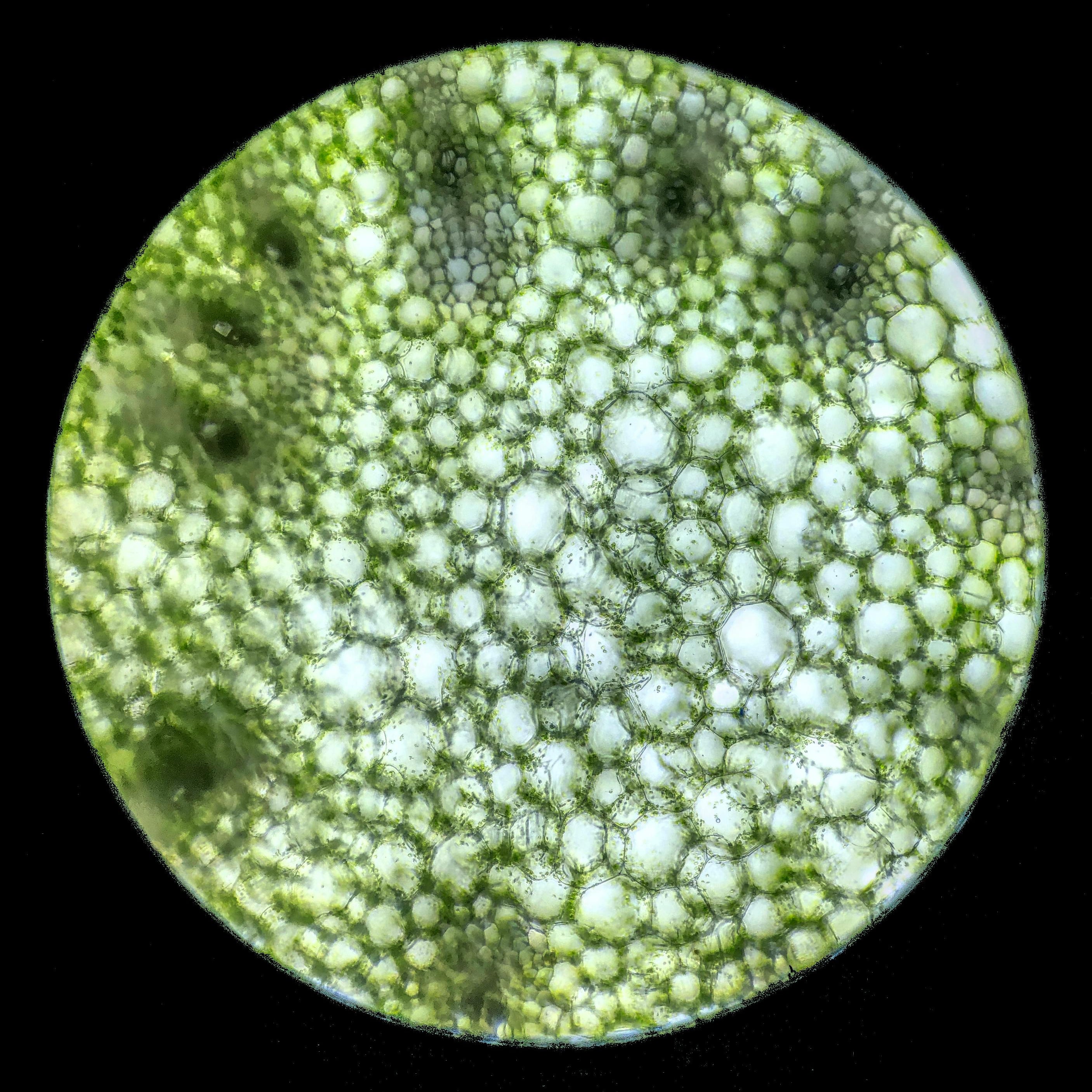Legend tells of a woman with a wild wolf heart and fierce devotion, driven by the moon's energy and the splendor of nature. She carried with her a bow with silver arrows, always ready for the hunt. Her name was Artemis—the Divine Feminine—daughter of Zeus and Leto, the Greek goddess of the wild land, the patron of pregnant women, child-birth, and newly-delivered mothers.
To protect those she regarded as her own, this incarnation of Mother Earth left us a gift: Artemisia vulgaris, commonly recognized as mugwort, the mysterious, sacred plant believed to induce vivid dreams, astral projections, and future divinations.
The dream herb, as some like to call it, has a long history not only as a spiritual ally and medicinal plant but also as a spice, food, and flavoring agent for beer and other beverages. But you've ever considered smoking mugwort, then you're in for a treat. Relax and reconnect with the mysticism of Artemis and discover the benefits of smoking mugwort.
What is Mugwort?
Mugwort, Felon herb, Chrysanthemum weed, Riverside Wormwood, old Uncle Henry, sailor's tobacco—the list of monikers goes on. While it has many names, each refers to the ancestral Artemisia vulgaris, a perennial, polyonymous weed in the daisy family.
Although the aromatic mugwort originated in northern Europe, Asia, and North Africa, it has been naturalized in much of the United States. It was introduced to the western world by European settlers as a medicinal herb. Since then, this legendary herb has spread across the continent as an unstoppable force on roadsides, garden edges, and farms.
From July to September, its small flowers bloom in beautiful shades of yellow or reddish-brown, standing out among its smooth leaves, which have a particular silvery fuzz on the underside. Both flowers and leaves, along with their roots and stems, have been put to use in folk medicine to make different preparations including tinctures, extracts, tonics, teas, powders, and essential oils.
When dried and crushed, its grayish-green leaves give off an inviting sage-like smell. Its intense, pungent aroma is complemented by its sharp, spicy taste—all of which are provided by a unique terpene profile led by Eucalyptol, Caryophyllene, and Camphor, followed by Camphene and Sabinene.
Is Mugwort psychoactive?
When mugwort is smoked, it exhibits very mild psychoactive effects and strong relaxing properties. The intoxicating qualities of the sacred Artemisia vulgaris comes from the chemical makeup of their leaves.
α- and β- Thujone are the psychoactive compounds which provide slight hallucinogenic or psychotropic effects to mugwort and other plants. Besides giving a gentle, relaxing buzz, these terpenes also stimulate the heart and the central nervous system.
But Thujones are not the only psychoactive ingredients at work here. There are three additional terpenes found in A. vulgaris that work synergistically with them to account for mugwort’s sedative and slightly psychedelic effects:
-
Camphor: Besides soothing a cough, this minty terpene can also cause mild hallucinations that can blend seamlessly into waking consciousness.
- α- Pinene: This terp can be both uplifting and sedating, with a fresh piney scent. Think of how you feel walking in a pine forrest—clear and relaxed.
- Linalool: This floral-scented terpene works in conjunction with α- Pinene to slow down your racing mind and take you to dreamland thanks to its sedative, motor depressant, and sleep-inducing effects. It's common in lavender, too.
Together, these compounds sedate the user and stimulate hallucinations, explaining mugwort's association with vivid and often psychedelic dreams. When consumed at a modest dose, the psychoactive effects of mugwort remain gentle but, when taken at higher dosages, can induce more potent results.
Is Mugwort legal?
In the United States, mugwort is federally uncontrolled, meaning all parts of this plant and its extracts are legal to cultivate, buy, possess, and distribute—sell, trade, or give—without a license or prescription.
However, many U.S. cities, and states, like New York and Louisiana, have outlawed mugwort when intended for human consumption. The law excludes the "possession, planting, cultivation, growing, or harvesting" of this plant when used "strictly for aesthetic, landscaping, or decorative purposes."
Be sure to check your local and state regulations before cultivating mugwort. There are heavy fines for planting this medicinal plant in some states. For more information, check out the legal status of mugwort.
Can Mugwort be smoked?
Mugwort has a long history as a smokable herb. For centuries, this sacred plant was traditionally dried and smoked as part of rituals and ceremonies in many cultures to promote lucid dreaming.
You can smoke it by itself or paired with other smokable herbs like cannabis or tobacco to enhance the flavor, create a smoother smoke, ease harshness on the throat, or simply add more body to a joint.
Many people use Artemisia vulgaris to wean off tobacco over time. Some suggest starting with a 50/50 mix of tobacco and mugwort and gradually reducing the amount of tbacco down to zero.
Potential benefits of smoking Mugwort
Throughout Europe and China, mugwort has been traditionally used to boost energy, relieve stress, promote blood circulation, and support liver health.
According to anecdotes, mugwort has helped sooth health conditions like anxiety, digestion problems, muscle and joint pain, migraines, and irregular periods. Even Roman soldiers supposedly used mugwort leaves in their sandals to soothe aching feet while marching. People also believed this magical plant could protect them from wild animals and evil spirits.
Yet, while the history behind the use of mugwort is fascinating, it begs the question: what does science say?
Arthritis reduction
In medieval medicine, A. vulgaris, often called Mater Herbarum—the mother of herbs—was used externally for treating wounds, easing tired legs, and relieving painful gout flares, which is a form of arthritis characterized by severe pain, redness, and tenderness in joints.
Recent studies have shown sufficient evidence to suggest that the use of mugwort through moxibustion, a therapeutic practice that uses mugwort smoke, effectively reduces pain in arthritis. Clinical research found that the effects of moxibustion could help with symptom management in people with knee osteoarthritis, a common disorder in the elderly.
Digestive benefits
According to the Herbal Drugs handbook, the oral consumption of Mugwort stimulates the secretion of gastric juice and relaxes the gastrointestinal tract and bile ducts. For ages, this herbaceous plant gained popularity as a remedy for digestive issues, including:
- Poor appetite
- Stomach pain
- Acid reflux
- Intestinal colic
- Flatulence
- Indigestion
- Constipation
- Diarrhea.
Its leaves are used in small quantities as a digestive aid, especially in fatty foods. However, much of the evidence to support these claims are anecdotal.
Menstrual relief
Mugwort has excellent potential as a powerful ally for menstrual cramping and the overall health of the female reproductive system. In the medieval world mugwort was used to stimulate menstrual flow and induce abortion safely.
Different texts extensively outline Artemisia vulgaris as a menstrual tonic utilized not only in the absence of menstrual cycles, but also to stimulate healthy and regular menstruation. Between its many uses, Mugwort was also taken orally to help relax the uterus, ease labor pain, and expel fetal tissue after a miscarriage.
The secrets of this therapeutic plant rely on its composition. Remember the psychoactive compounds of mugwort, α- and β- Thujones? Research has revealed that these terpenes can also stimulate the uterus muscles and ease pain thanks to their anesthetic properties.
Likewise, Eucalyptol acts as an analgesic, sedative, and muscle relaxant. However, its use should be limited during pregnancy because it can lead to a miscarriage. A 2016 study shows that this terpene, also known as cineole, can harm and kill umbilical cells in human fetuses.
Last but not least, we have artemisinin, a chemical compound that causes gentle contractions of the uterus. In traditional Chinese medicine, Mugwort was consumed to induce labor.
Mugwort is seen as a gift from nature to awaken your feminine, yin side—just like cannabis, and especially our Quiet Times Minis, a calming flower blend with notes of spice, lavender, and chamomile.
Smoking Mugwort for stress
Mugwort has been studied in modern medicine to treat conditions like epilepsy, insomnia, depression, and anxiety. The Journal of Medicinal Plants Research published a study on mice highlighting the anticonvulsant and anxiolytic effects of leaves from Artemisia vulgaris. Nonetheless, more research is needed to support these findings.
Anecdotally, Mugwort is a herb that guides you to inner peace. Since it’s an herb closely connected with the energy and cycles of the moon, there’s a common belief that it helps to end a cycle and move on into a new phase. When mixed with indica strains high in linalool like Quiet Times' Lavender Honey Pie, it generates a serene mindset, shutting down unwanted intrusive thoughts and helping you ease into a relaxed state of mind, free of tension.
Mugwort for moxibustion
Moxibustion is an important part of clinical treatment in traditional Chinese medicine. This technique involves rolling mugwort into sticks or cones, igniting it, and waving it over the specific part of the body that needs to be treated. Generally, it's practiced during acupuncture to increase its effectiveness and enhance its effects.
During moxibustion, acupuncture points are stimulated through heat and moxa smoke, which are believed to have antibacterial, antitumor, antiviral, anti-inflammatory, and air purification functions. This method is chosen by some to treat pain, osteoarthritis, stroke rehab, constipation, and other conditions.
Some studies have evaluated the effectiveness and safety of moxibustion in pregnant women. Research suggests that moxibustion may help turn a baby that is lying bottom or feet first, also known as breech baby, into a head presentation —how cool is that? According to these findings, Moxibustion may represent an alternative option to reduce the need for cesarean sections.
Moreover, there is also a clinical trial that suggests that moxibustion may reduce both the frequency and the severity of hot flashes associated with menopause.
We recommend visiting a professional practitioner, but if you choose to try this technique, ensure the area is well ventilated. Research has found significant toxic components in moxibustion smoke that might cause adverse effects on the liver, kidneys, and heart.
Is it safe to smoke Mugwort?
While it might be less harmful than cigarettes and other chemically processed substances, smoking mugwort can harm the lungs. According to the American Lung Association, the combustion of cannabis or any smokable herb may contain many of the same toxins, irritants, and carcinogens as tobacco smoke. Be sure to choose organic, food-grade herbs for smoking.
Medicinal herbs, like Artemisia vulgaris, can be helpful when used as a complementary therapy, but they shouldn't be used as a definitive treatment. Consult with your physician before smoking mugwort or any other herb. Ask about any risks, side effects, and interaction with other medications you are taking.
Since there isn't enough scientific information to determine an appropriate dosage for mugwort, experts recommend using this mystic herb in moderation. For people with ragweed allergy, smoking mugwort could be dangerous, especially if they're also asthmatic. Likewise, mugwort should be avoided during pregnancy or breastfeeding.
Side effects of Mugwort
Although it is generally considered safe to use, if you’re allergic to ragweed, celery, carrot, apples, peaches, sunflowers, or birch, be cautious. If you’re allergic to one of these substances, you may also be allergic to mugwort. You may even have a condition called celery-mugwort-spice syndrome, which is an associated allergy to several substances.
If you're allergic, coming into physical contact with the plant, drinking its tea, or smoking its dried parts may cause hives or rash, sneezing, nasal congestion, swollen lips, itchy throat, irritated eyes, and even asthma.
In high doses, Thujones can turn into neurotoxins, causing vomiting and seizures. For this reason, consuming large amounts of mugwort can be toxic, especially if you choose to use its oil, which typically contains high concentrations of this psychoactive compound.
As mentioned before, mugwort should be avoided during pregnancy to minimize the risk of miscarriage. In the same way, its use should be restricted in children or mothers who are breastfeeding.
More research is needed to investigate the potential side effects of Artemisia vulgaris in various forms and uses.
An ode to Mugwort
Should you decide that a pinch of dried mugwort is just what you need to connect with the free spirit of the Divine Feminine, we leave you with a poetic ode to this mystic herb:
Curling bell in the morning, Artemisia path winding
Whistling autumn drizzle, willow smoke light.
Glance back China, mountains, and rivers beautiful
Raise head to blue sky, stars and moon bright.
-Luo Zhihai. 1954






